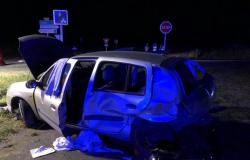By
Adrien Deschepper
Published on
June 5, 2024 at 7:16 p.m.
See my news
Follow News Oise
Today we know more about the vast necropolis dating from the Middle Ages discovery at Choisy-au-Bac, a town of more than 3,000 inhabitants located near Compiègne, in Oise. Of the extensive excavations were carried out to shed light on incredible finds, a fascinating trace of history in the heart of the town, after the detection of remains during a preventive archeology diagnosis carried out by INRAP in 2021.
Human skeletons and numerous graves were notably found, a few tens of centimeters underground, on this land where the construction of brand new housing is planned at the initiative of Clesence, rue du Général-Leclerc.
336 burials, 116 sarcophagi and 36 reductions at Choisy-au-Bac
In June 2023, the Eveha design office began archaeological excavations over more than 2,000 m2. The latter recently took stock of his research on the Merovingian necropolis of Choisy-au-Bac. These notably made it possible to add the discoveries of graved remainsofa roadof excavated Gallo-Roman structures as well as many modern and contemporary structures, explains Eveha.
Several months of careful exploration brought to light a “densely occupied” Merovingian necropolis. In total, 336 burials, 116 sarcophagi and 36 reductions of bones were counted on this small wasteland on a shopping street in Choisy-au-Bac! “The individuals were placed in coffins in which some were nailed as well as in wooden formwork mainly wedged by limestone blocks,” explains the archaeological studies office.
One of the characteristics of the Choisy-au-Bac necropolis is the presence of a large number of sarcophagi aligned or grouped into small nuclei of 3 to 4 sarcophagi. The shape and type of sarcophagi were also very diverse.
A dating estimated between the 5e and the 8e century
Specialists specify that the human remains found were mostly positioned on the back, with arms extended. Further analyzes revealed the presence of clothing in most of the tombs, or even ceramic parts.
No sorting of these burials had been carried out at the time. “There we find men, women and children without distinction. No grouping by age and gender was observed,” emphasizes Eveha. “Traces of looting” were also identified by archaeologists in the coffins.
The first typological observations therefore point towards a dating generally located between the end of the 5th century and the middle of the 8th century.
“We’re not too surprised”
In the commune, the Cossacians follow this story closely. “It’s impressive to know that there were skeletons. Coffins for children too, it’s special. I think there are some everywhere in the neighborhood,” supposes a local merchant. For its part, the town hall mentions “ an important discovery ».
“We are not too surprised, there have already been discoveries of this kind in Choisy-au-Bac as we are at the confluence between the Aisne and Oise rivers”, explains the mayor, Jean-Luc Mignard withOise News.
There was undoubtedly a castle nearby, on the hillock on Chatelet in the Laigue forest. Around, there was inevitably activity. The discovery perhaps even predates the village’s royal abbey. Around, I think there are other remains underground. The ancients must have built without paying attention to all this, perhaps it was not in the era of the time.
Faced with this historical testimony, the municipality made a request for keep a sarcophagus, with the aim of being able to exhibit it, alongside an explanatory panel on the research. “We will have that within a year, while waiting for analyzes from archaeologists. We also asked them to come and do a conference to present these discoveries,” adds the mayor.
In the meantime, the remains collected in the field are being analyzed in the laboratory to determine the biological sex, age at death and health status of the individuals.
Are these findings linked to a Merovingian royal palace ? Or with an early church? “The analyzes will certainly provide answers and refine our knowledge,” concludes Eveha, who intends to make these skeletons speak.
Follow all the news from your favorite cities and media by subscribing to Mon -.







